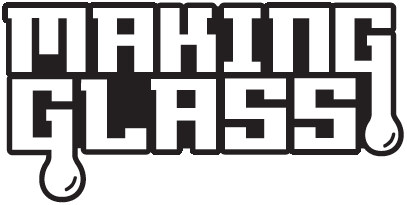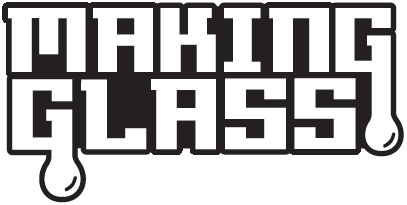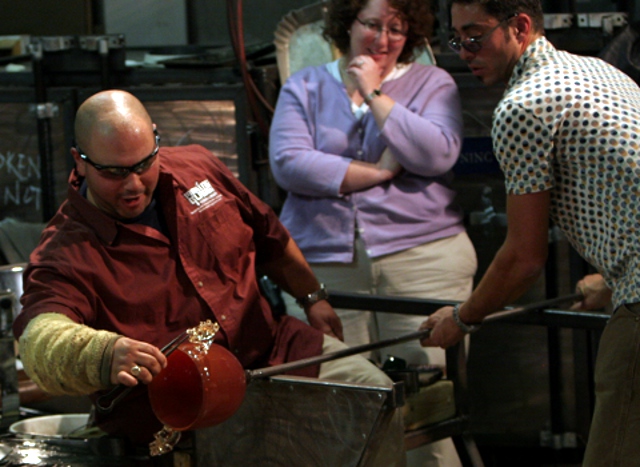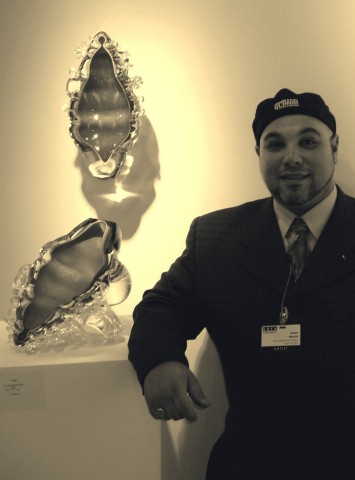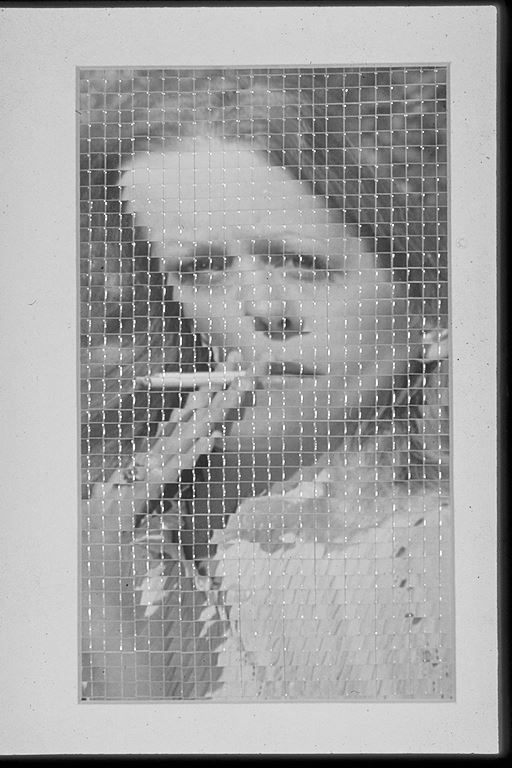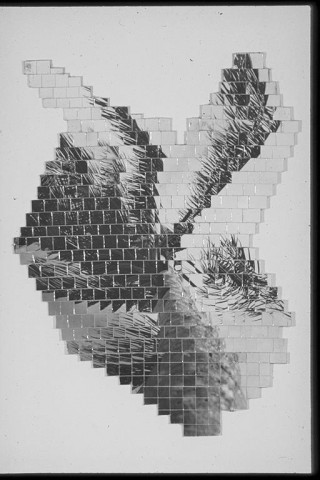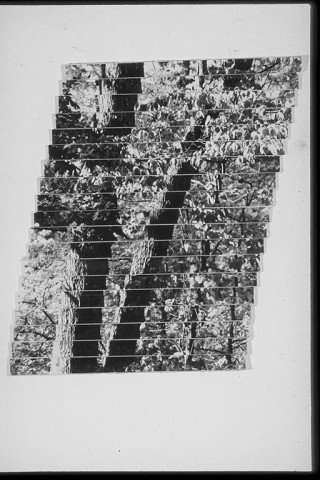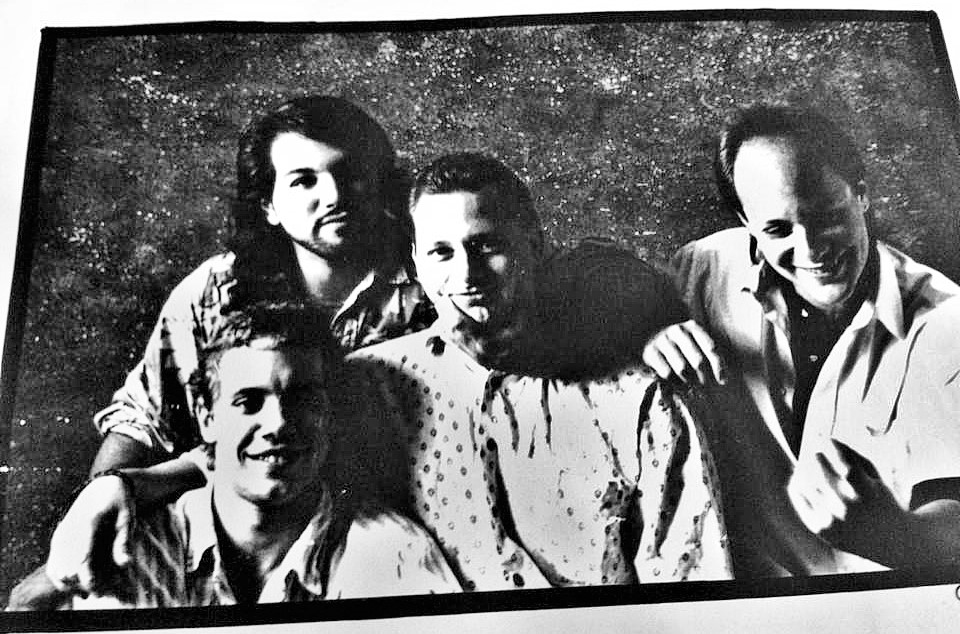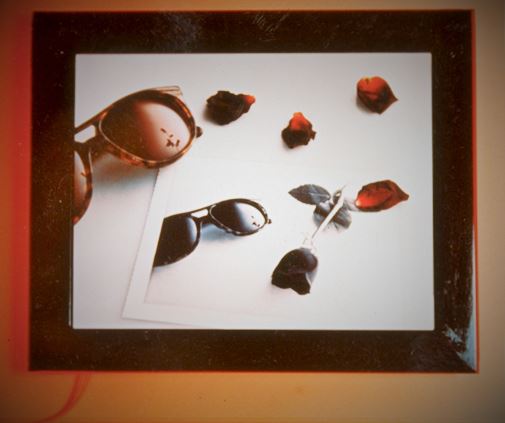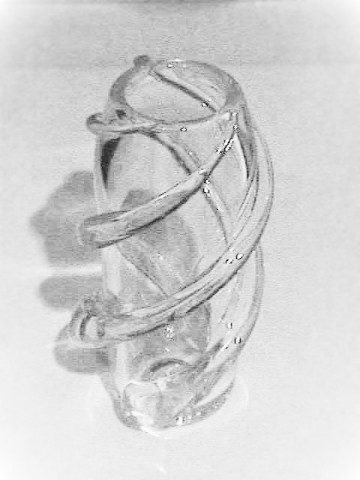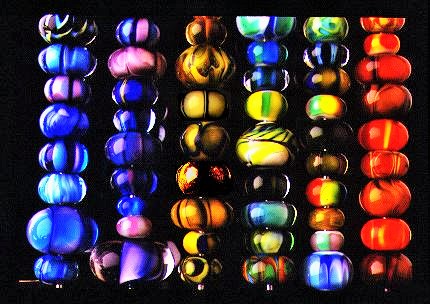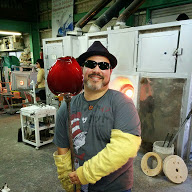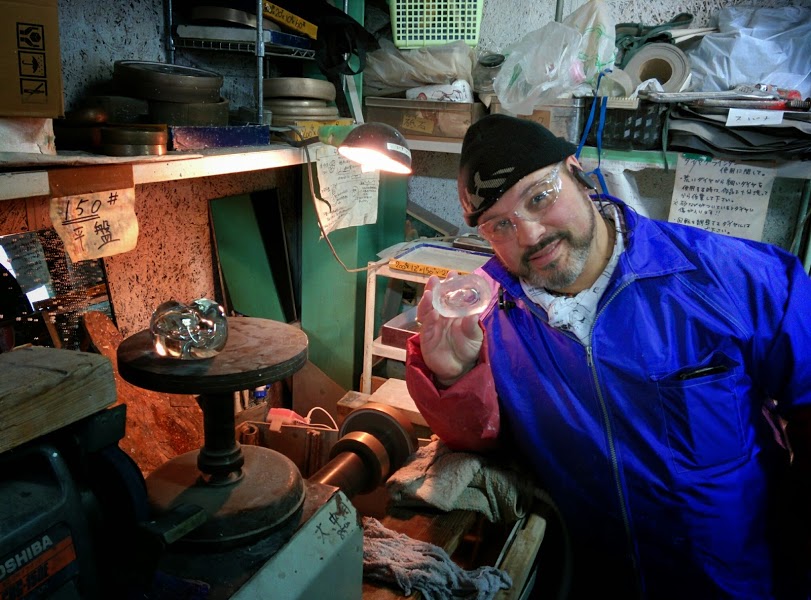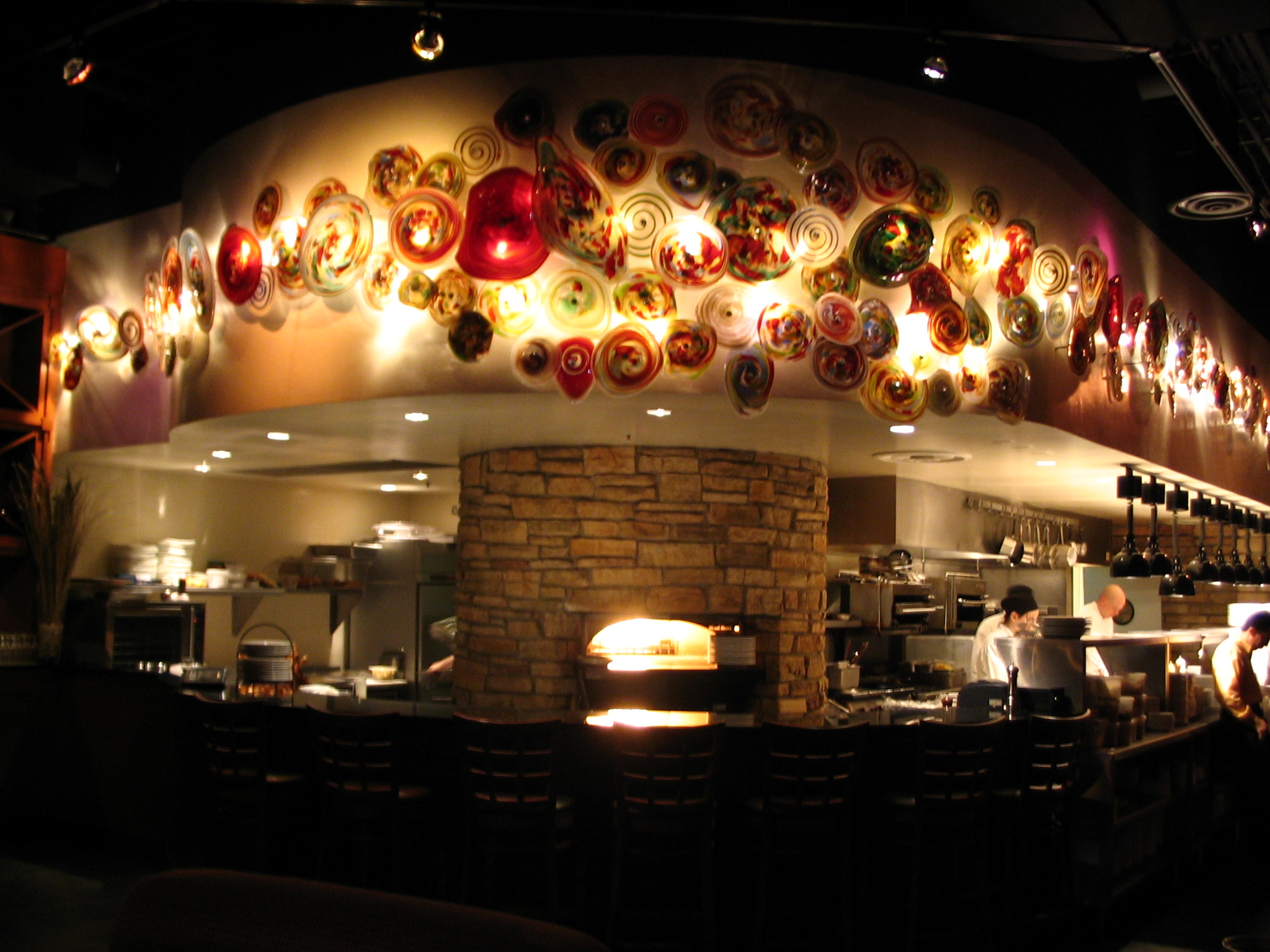
Biography
Daniel N. Marder
uses a myriad of materials in his work ranging from blown, flame-worked, cast, and cold fabricated glass to Metal, Original Images, Kinetic Electronics and Self generating electronics, to found objects. Some of his most recent projects explore sculpture that uses co-generation from kinetic energy from wind and solar and other sources to produce energy. Another project uses Dichroic high resolution images from 2 to 50 stories tall wrap entire buildings or a series of buildings to form a large image or a group of images to reflect the suns radiation for active solar shading and photo voltaic capture while looking spectacular.
Artist’s Statement
“The theme that’s intrinsic in my work is an exploration of perception of relationships through experiential narrative. We are surrounded by relationships, most of them seem simple on the surface but are unfathomably complex if you actually stop to examine them. Life can be so challenging, most adults avoid looking beyond the surface of anything for fear of what challenges lie beneath the surface. Early in life I had no choice to avoid the challenges of a broken home, learning difficulties at school, not finding common ground intellectually with a particular group of kids my age. I learned that challenges could make you feel like There’s no point in continuing, or can present the best moments for learning and growth In my Art making I use processes which are physically and mentally challenging. Processes such as Hot glass forming, cold working and polishing, Creating handmade mechanical and digital electronic devices, as well as creating spaces with large scale multiple element installation.”
My Journey 旅
It was clear that Daniel wasn’t like the average children at Solomon Schechter Day school while his Hebrew and English language skills and vocabulary were above average for his age his educators were unable to find a way to teach him to read at grade level.
“My earliest memories of school was testing and tutoring. After they gave us a series of tests they would divide us up, eventually I would end up by my self in a room where someone would try to teach me to read me to read. First with my teacher, then with every other teacher in the school, not just my grade but all them. After that then they would take me to a place called the SRA Lab to watch film strips that would flash words and pictures on a screen while words and sounds played in headphones. it was very cool, but not much use for learning how to read. I couldn’t think there was a much better use for this great equipment that flashed pictures and sounds on que”
By first grade Daniel was placed in the North Suburban Special Education pilot program at Oak lane in Northbrook, IL. this program was only available through 6th grade by that time Daniel was reading at a 8th grade level and doing integrated mainstream Art and Science classes. His home district 112 it had mandatory special education full time for special needs students.
“Being a ‘SPEC’ in Jr High was no picnic It wasn’t bad enough that I was in a new school, I was on the short buss- (not actually I walked to school) Half of the kids were mentally challenged , some of the kids had physical handicaps and everyone else was a behavioral disability. They had us doing 5th grade work, not a challenge in the whole day so since most of us were smarter than that kids tended to get into trouble allot. Since the system had given up on trying on teaching us anything the most constructive thing we had to use our minds with was Music Art and Shop class”
Daniel’s first opportunity to non academic art-making was with black and white photography while sent to spend the summer with his Uncle at University of Montivallo in Alabama (1977) after returning from a trip from London with his Father Step mother and Step sister. He had seen what was going on in the london underground Punk culture and wanted to continue exploeing that even if noone back home knew what it was.
“London was wild in 1977 compared to Chicago. I was more hoping to bump into My Step Sister and I followed a pair of girls who had their hair died pink to match their nickers into a back ally pub and accidentally discovered Punk and a group called the sex pistols. Nobody back home knew what the hell I was about. When Punk Danny Arrived back in the US I was sent to Sweet home Alabama to get straightened out. The science of photography always fascinated me, the Amazingly mysterious machinery, cameras Lenses, magical sensitometry of film mixing chemicals developing images in the dark room it was far away from the hicks of the south lands as I could get! And I had an excuse to spend days in the dark, time was completely void in the focus of the activity of creation. To me the most interesting thing about photography is it’s integral relationship it has with light but Prints themselves were very limiting they were very real and boring, they could basically only show you what was there, so I spent most of my time making theatere and deconstructing the print.”.
By high school Daniel was already working as a free lance photographer and a teachers assistant in at Highland Park High School. Where he began showing his first award winning photographic series (IHSA Merit awards, and the Kodak gold key 1979,) influenced by the work of Yaacove Agam.
“The rotated segments series was my first attempt at photo manipulation and deconstruction of the print as a means of it’s denial of reality. In the 1980s we were still years away from at home digital photo manipulation. Everything was analogue, mostly camera or darkroom tricks I liked that stuff for fun, but I was taught to be a purest behind the ground glass and a straight shooter. The biggest sin a photographer could do was cut a photo or a negative and i was doing it in the most obsessive compulsive way into tiny bits rearrange it like a jigsaw puzzle. In fact, I was abstracting nature in the most analogue way possible, while maintaining the pure photo to deny it’s reproduction of nature I remember my High school Photography teacher, Katie Waters, formerly a University teacher, critiquing my photos and asking me “You actually make all of images your art images for this specific purpose, every single one of them? I thought she thought I was going to try to tell me to change or I was a freak or something until she made me the TA and put me in charge of the darkroom”.
Focus On the arts is a week long event at Highland Park High school created to expose students to visual arts. There Daniel saw Ira Saper demonstrate Glass blowing for the first time as he covered a Photo assignment for the school newspaper.
“I got to the Glass blowing demo earlier and stayed all day I didn’t have a ticket for the event so when I came back the next day Ira asked me if I wanted to try it out. I gathered some glass out of the furnace and dripped it on the ground a couple of times- I kept those first glass doodles to this day (l put them inside a piece about 20 years later).”
After studying Cinema & Photography at Southern at Carbondale, IL University Marder continued a career as a commercial photographer shooting table top images to pay the bills, but his love was Fashion Editorial & People Photography.
“Chicago wasn’t a fashion town in the late 80s, so after working as a catalog photographer and assistant every chance got & still not making ends meet, I took a salary job Repping another photographer. Repping was a disaster for my Photography career, Art directors that would work with me hated the guy I repped but now wouldn’t call me anymore. Luckily the photo studio gave my band a space to practice at night so when we made more money playing out than I made repping I started touring as Danny Says in 1987”
“Danny Says” played as a house band at the sanctuary in Chicago IL, and toured Midwestern college campus bar scene also singing with SXBeat and Wellof Souls befor Danny Says disbanded in 1989 Daniel continued to tour with until a 3 month bout with pneumonia in 1990 when he chose to stop singing professionally. He applied to The School of the Art Institute of Chicago in hopes of taking some time to develop.
“I had a pretty extensive photo portfolio so I figured I could get in to school. My scholarship was for Photography but I never went near a darkroom unless you count the holography lab. I majored in Art and Technology, They had Digital electronics, silicon graphic workstations , and Something called time arts (4-d) ,neon, and glass blowing in the summer light metals and Foundry I said to myself- I’ll sleep when I’m dead. it’s not like I was going to get any kind of day job after working on a stage or behind a stage for that many years most of the people I knew were certainly not the kind of freaks you wanted to ask favors from either too rich or too addicted to somthing. “
Daniel began his passage into glass-working at The School of the Art Institute of Chicago, where he worked for two years as a tech for the neon bending courses responsible for bombarding all neon students work the position was 20 hours work exchange, keys to the lab a small studio space and 24 hour access. In the summer of 1990 he attended Oxbow in Saugatuck, MI for a summer of hot glass.
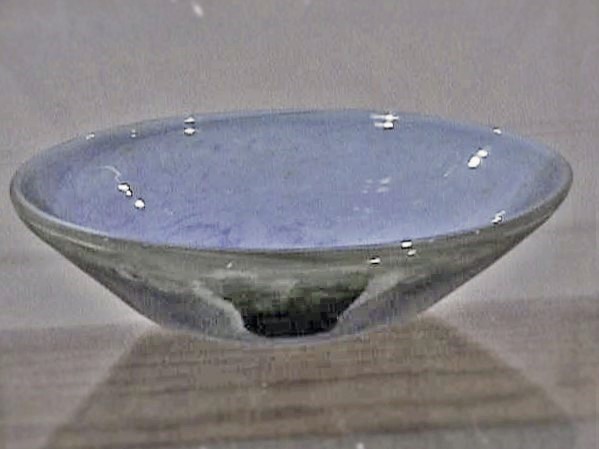
Low Bowl Oxbow 1994
“In the neon shop we were trying to stretch the boundaries of what neon could do blowing out the tubing putting things inside it it didn’t take long to figure out neon and plasma’s limitations. The first night after my first glass blowing class I had these vivid glass blowing dreams I imagined how to make things out of glass I went through the steps in my dreaming imagination. Sometimes in the middle of the night I’d wake up in a panic sketch something and fall back asleep without even remembering waking up. My girlfriend who blew glass with me at the time, told me I’d give often gaffer instructions in my sleep. I think in the beginning glass blowing is so intense of an activity you concentrate so hard on that your brain can’t shut it off just like any other addiction. It was at Ox bow I met Kotoro Hamada and Kait Rhodes from Rhode Island school of design Kotoro was the best glassblower I’d ever seen He convinced me if I wanted to learn how to blow glass I needed to go to RISD”
Marder was the first Non- Atlantic conference student to receive permission for a year long exchange from the School of the Art institute of Chicago to Rhode Island School of Design (RISD) However, after one semester he was asked to leave due differences in opinion with the glass department chair Bruce Chao. Daniel moved to the glass program at Australian National University (ANU), in Canberra, Australia.
“I loved RISD it was a great glass school! I had the great Michael Schiner as my teacher, and met the most amazing people there, that are still among my closest friends, but It was wrong for anyone tell me my art was inferior because I was from a different school of thought Bruce Chao May be a respected artist but He Sucked a Cock as a mentor. He wasn’t going to help a person like me beyond excepting me to the school unless I was going to start over at RISD as a freshman and pay full tuitian at 25 with mt expierience as a fabricator and my school background he should have factored in that I was an asset to his program and given me a break but he’s a prooven taker. Luckily a couple of the grad students, Harumi Yukutake and Boyd Sugiki genuine humans, suggested I go to Canberra Australia a place where people were kind and more open minded about art. I really respected their opinions they were already grads to the best glass school in the world and Boyd’s technique and Harumi’s Art was the best I’d ever seen, I got kicked out of Fancy Art school, Time to go to a real place. I called Stephen Procter and interviewed over the phone in the middle of the night explained my situation Express international posted my slides and paper work with some red tape in a month I was maxing out my credit card on a nineteen hour coach flight to Canberra”.
British Natives Stephen Procter and Jane Bruce, most recently via New York Experimental Glass center which she headed for several years, shared the chair of ANU Canberra glass department. Stephen took over the department from Klaus Moje they both favored a Bauhaus approach to glass but where Moje favored fusing and cold-working Proctor favored minimalist forms in blown glass especially lathe worked glass.
“Stephen met me at the airport, to my surprise and took me to the highest point overlooking town. He showed me how beautiful and peaceful it was there, and welcomed me. He also told me I seemed like the typical loud and boisterous American and that was OK as long as I could keep it in check and didn’t disturb others too much. Then he told me the most important thing I’ve ever learned in school.
“This studio is a rather tight community your becoming a part of we considered that when we accepted you, we all pulled together here. , We can teach you a thing or two about technique but your going to learn more from practice and your contemporaries than your going to learn from us teachers anyhow so it’s very important that you Do your part, try to respect each others feelings. Do that and you’ll have friends for life”.
-Stephen Procter
” I’ve always tried Stephen, I’m not always great at the feelings part, in fact I suspect I suck at it, but I still try. I’ve tried to teach the goals the key of knowledge and getting along with almost anyone if not just in the glass studio.After that he took me to meet Jane in Her office her tack was a bit different She Threatened:
“Bruce Chao is a personal friend mine and he, warned me about you, I’ll be watching you “
“My time in Australia changed my life. There is too much to say here I’d write a book but i doubt anyone will read this much. It’s a great Place to learn. I owe a huge debt to my friends and teachers I will never be able to repay I wish I could share all the good times now, especially with Stephen whom I didn’t truly come to appreciate until years later when I started the Glass Department at Salisbury University. I’m very happy that I was able to tell him of his Profound influence on me when he called from Washington D.C. I drove down to have afternoon tea with him. He was surprised and Joked he could now die a happy man knowing he had a positive effect on somebody in the world. I guess the joke was really on me because He died shortly after of terminal cancer.”
After returning from Australia in 1995, Daniel received his BFA from The School of the Art institute of Chicago in Art and technology.
“After “The tute” that I wanted to continue blow glass but Chicago, was a wasteland! I couldn’t afford to go back to Oz, I wasn’t going to get a production job, it was looking grim. My Girlfriend Jennifer Kelting was also broke had only one plan after school, go to more school. So our plan was the school should pay for us to go there for free. The formula was pick 4 schools, apply interview tell them if they want us they gotta pay, and if they don’t want us with our incredible talent Fuck them! We’ll figure it out later. To pay for Gas for Our interviews we bought some soft glass and turned our Uptown Chicago apartment back porch into a lamp-working studio. We started making beads with a two Nortel torches I bought with money from doing neon bending commission and sold necklaces at summer festival venues and dead shows. If you’ve ever met Fur at one of those shows with her big blue eyes, she could sell beads to anyone, they really weren’t looking closely at the beads and here eyes were just the hook, got me for a decade bless her heart.”
“At my Tyler Interview I remember Jon Clark asking me what if one gets in but the other doesn’t Would you come anyway? we both said yes, This was just before he told Us we were accepted but we had to tell him right now- the beginning of the grad school mind -fuck. So oddly enough this formula actually worked for the most part. we got tuition remission and stipends for teaching and the rest was covered with student loans and selling glass at craft shows.”
Daniel received his Masters of Fine Arts in glass blowing from Temple University’s Tyler School of Art in 1997. During His Masters Candidacy at Tyler Daniel Also attended a Summer term At Temple Rome for the Art and culture seminar Under the Scrutiny of John Clark He began a new tradition at Tyler in Beginning Glassblowing of teaching technique early, by Introducing the first technical glass blowing curriculum adapted from Michael Schiner’s Seven basic glass forms curriculum taught at RISD. Daniel was also the Tyler Glass Studio Tech instrumental in modernizing and completely redesigning the glass studio making it function in a more ergonomic manner with a safer studio configuration and ventilation that was silent but still capable of making 21 to 38 air changes per hour establishing a new president in glass studio ventilation. He also built the first automated glory hole and furnace light-up safety systems and computer temperature controlled Furnace systems to the Tyler Glass Program with the aid of Jim Harmon and Steve Abell engineering.
“If you ask me if it was worth it I can only say I have scars from Grad School some people wear scars proudly others try to cover them up. You always learn something from a wound a Scar is just there to remind you.”
After receiving his MFA from Tyler in Glass, Daniel taught Lamp Working at Urban Glass in Brooklyn, NY (1998) , while commuting between his studio in Maniyunk, PA and teaching Sculpture and 3-d at Salisbury State University in Salisbury, MD. In 1999 Marder as a full-time Teacher, pioneered the first glass blowing classes at Salisbury University (SU), which is the first and only accredited Glass degree program in the Maryland State University System. While at Salisbury University, He designed and wrote the Permanent curriculum for Hot Glass, 3-d Design, Sculpture Foundry, Web Page Design, taught Ceramics and Foundry there. Marder ran the SU glass 3-D Foundry and Sculpture studios on a triple overload schedule at the until 2004.
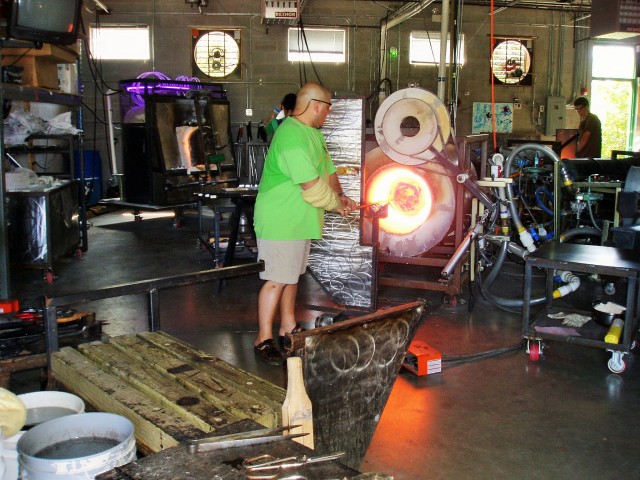
Making Glass LLC Studio One Hot Shop 2400 Sq Ft 1490 Old Deerfield Road Location *6800 Square feet Total
